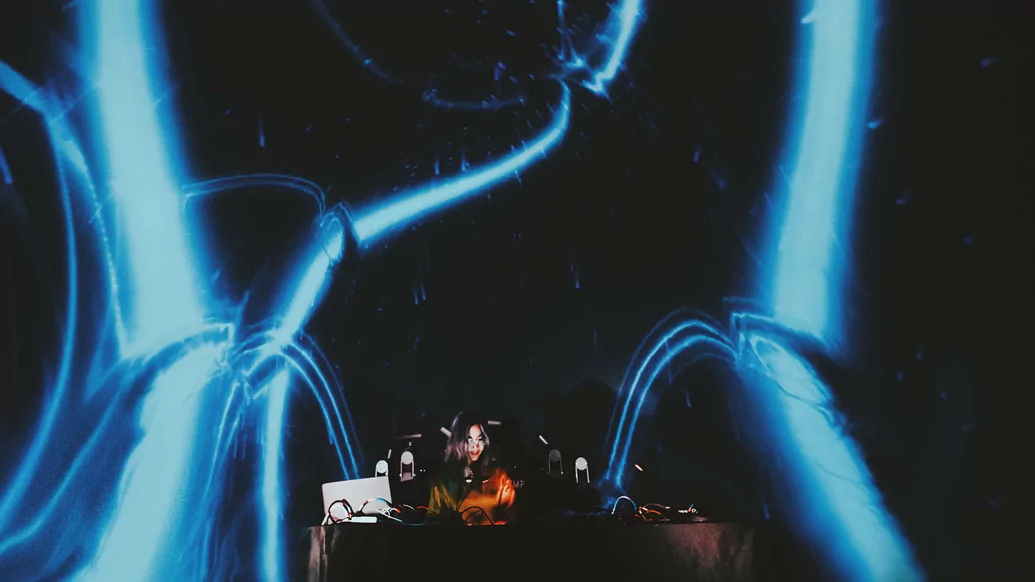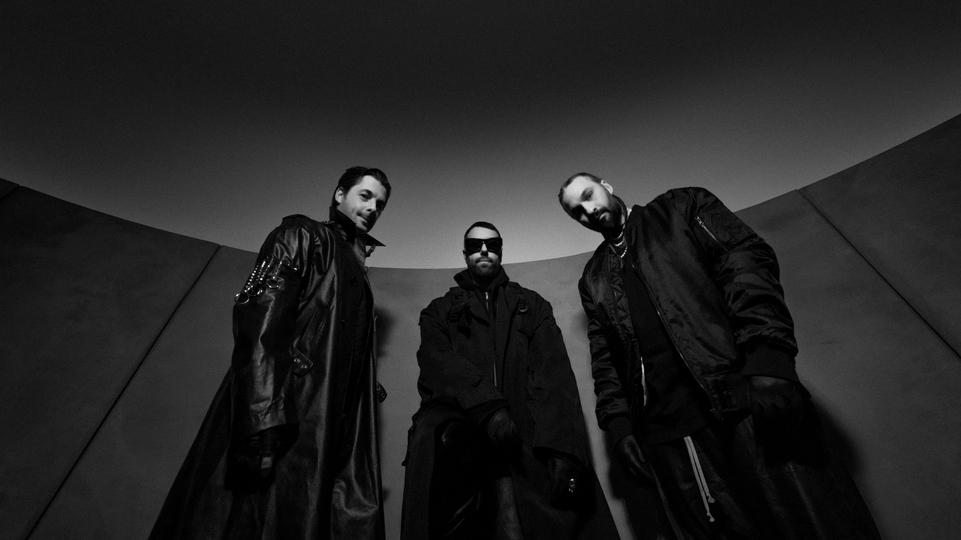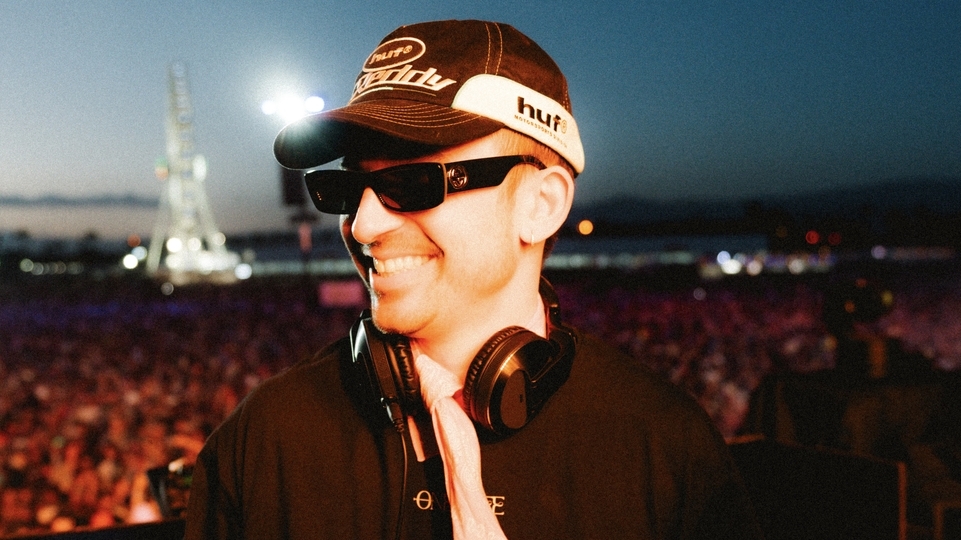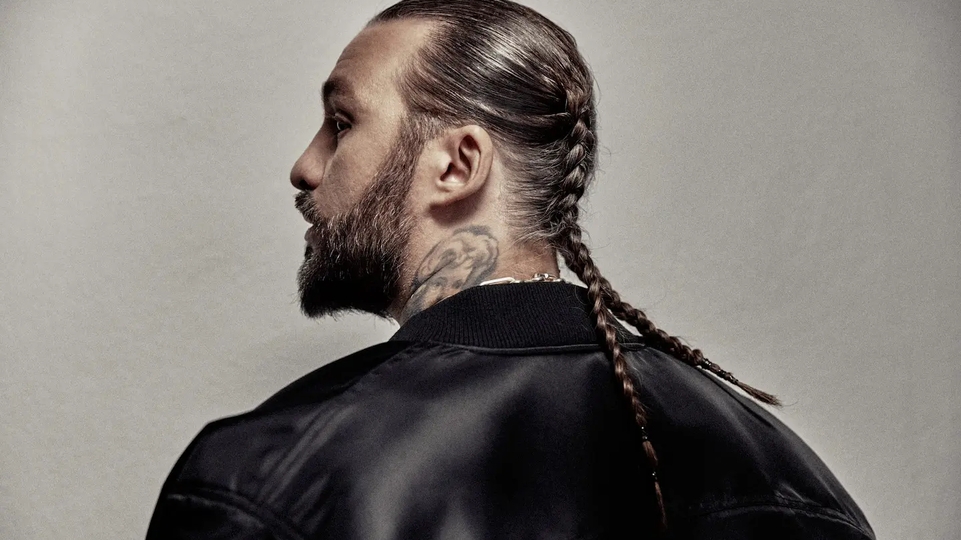
How TOKiMONSTA reclaimed her art
TOKiMONSTA is the rare kind of artist who transcends genre — a producer who has worked with everyone from Flying Lotus to Skrillex and Anderson .Paak. She’s built a huge fan base and an impressive catalogue of music with a steely individual drive nothing can deter. DJ Mag meets her in Los Angeles to find out how she battled a rare brain illness and came back stronger than ever
Jennifer Lee climbs up a set of stairs at Mack Sennett Studios in between a number of elaborate costume changes, during an all-day photo shoot as her alter ego, TOKiMONSTA. When she sits down with DJ Mag, she reveals herself as an assertive conversationalist and an attentive listener, as she talks about her experience of a brain disease, Moyamoya, her surgeries and her recovery. It’s verging on four years since her diagnosis, and she is now 100 per cent back to being herself.
Post-recovery, she put out a TOKiMONSTA not-so-mini-album, the smooth ‘Fovere’ (2016) and a full-length album, the Grammy-nominated ‘Lune Rouge’ (2017), as well as commissioned an inventive collection of reworks for the album, ‘Lune Rouge Remixed.’ She has also put together two compilation albums of rising artists, the eclectic and delightfully unpredictable ‘Young Art Sound’ and ‘Young Art Sound II,’ released on her own label, Young Art Records. Two months after surgery, she played SXSW; a month after that, she performed at Coachella, and a month after that, she topped the bill at Lightning In A Bottle.
“My circumstance was different than people with other forms of brain trauma,” says the Los Angeles artist. “My disease is neurovascular. You have four arteries on the inside of your neck. Two that feed your scalp, and two that feed your brain, left and right. The arteries that feed your brain shrink. At the time of the surgery, I only had 10 per cent blood flow on one, and 4 per cent on the other. The reason I was so asymptomatic was my brain tried to compensate by filling up all these small arteries, but they’re not meant to hold that much blood.”
The only warning signs Lee noticed were transient ischemic attacks — TIAs, or mini-strokes — though at the time she didn’t even realise they were warning signs. These are so minor that you don’t think much of them. Ten years prior, she had had an MRA, a magnetic resonance angiogram, due to migraines. That scan showed some vascular shrinkage, but it was just in one area, so not much more could be discovered or predicted at that time. A brief numbness in her hand, losing her train of thought, not being able to feel the ground beneath her feet, spurred her to go to her doctor for a new MRA.
This scan showed more vascular shrinkage in multiple locations of Lee’s brain, and Moyamoya was the diagnosis. A rare condition (one in 100,000 people), Lee went straight to the number one specialist for the disease by cold emailing the head nurse at Stanford. She was accepted by Dr. Gary Steinberg, chair of neurosurgery, director of the Stanford Moyamoya Center, and the founder/co-director of the Stanford Stroke Center. The surgery he proposed would take a scalp artery, one on each side, and place it on top of her brain. These arteries then grow roots, so to speak, and feed blood to her brain from the top-down rather than the natural bottom-up.
“My options were: don’t get the surgery and see how well you do, but no matter what, you’re going to die,” Lee says, “or get the revascularization surgery with very bad odds and see what happens.
“Life is so temporary, and when you create art, it’s something that’s beyond you. I’m creating art to help with the issues that I’m facing. If your art is then consumed by someone else, it can maybe help them with whatever they’re going through”
“I’m a problem solver. I didn’t want to wait. I didn’t know how this disease was going to progress. If surgery is what I have to have, let’s do it. I know today that the artery feeding the left side of my brain is completely shut. Zero blood is coming through there — that means I would have died, so I’m really grateful for the decision I made. But also, it fucking sucks, to put it blatantly. You find out your diagnosis, you decide to have surgery; in between that, you have to write a will. You have to write an advanced medical directive telling them when you want them to pull the plug on you. You don’t want to have to think about that. People get to live blindly like there are no consequences. But when you’re dealing with a possible outcome like that, it’s very sobering.”
It’s not just the emotional decisions that have to be made, it’s the practical ones. Prior to her diagnosis, Lee had health insurance, PPO, which she upped the coverage on ahead of her surgery — something she was only able to do because of Obamacare, which lifted the ban on pre-existing conditions, namely her migraines. With her newly upgraded insurance, for which her premiums are upwards of $700 a month, she was able to transfer to Stanford. She had two surgeries back-to-back, costing over a million dollars, and she paid $30,000 out of her own pocket.
Lee spent a month post-surgery at an Airbnb in Stanford, recovering and to be close to her doctor. She had to be taken to the emergency room twice after the surgeries due to complications. Her business managers did their job so she could live without earning for almost three months, and continue to pay for her newly bought condominium.
Meanwhile, after surgery, she realised that she was not only unable to speak, but unable to understand what anyone was saying to her, like they were speaking a foreign language. She was unable to communicate or be communicated with. Then, her boyfriend came up to visit and played her beats he had made, and all she heard was noise, nothing she could identify as music.
“All my issues were due to the surgery,” Lee says. “You’re tinkering with your brain, rewiring all the blood, maybe bruising it a little. I’ve talked about it with my surgeon, and he doesn’t know exactly why I lost my ability to understand music, but none of his other patients have been musicians. You’re so caught up in the fact that you can’t talk, why would you care that you can’t hear music? For me too, I was struggling with speech so much, because I was so overwhelmed with that, it wasn’t until a week into this aphasia that I realised I couldn’t understand any music.”
She continues, “Life is so temporary, and when you create art, it’s something that’s beyond you. I’m creating art to help with the issues that I’m facing. If your art is then consumed by someone else, it can maybe help them with whatever they’re going through. The one thing that sucked about my experience is that I had no music to turn to. I was in this pain. I was frustrated. I couldn’t communicate with anyone. I couldn’t listen to anything. I couldn’t watch T.V. All I could do was sit there and think about the fact that I couldn’t talk and that I was in pain. It felt worse than being a potato because you’re cognisant. You’re just trapped.”
RECOVERY
Lee came home to Los Angeles, where she discovered that, on top of everything, she had become agoraphobic. Her stress threshold became non-existent, while her panic and anxiety attacks took over. Lee is not a stranger to these attacks, as she has experienced them in waves all her life. But this heightened version, where she couldn’t even do an experimental walk to the coffee place on her block, was something new. Plus, she was out of shape from being bedridden for so long, becoming winded and exhausted very quickly.


She went against her doctor’s orders and started walking on the treadmill. Then she started noticing that she could gradually speak more; her grammar slowly became more intact, music became music again. “As time went by, whatever had happened in my brain started to heal,” she says. “It kept my hopes really high. I didn’t feel like this is going to be me forever. I didn’t have to relearn everything.”
Lee turned another corner by completing her first song post-recovery, the empowering ‘I Wish I Could’ featuring Selah Sue, whose accompanying unsettling video speaks to the state of healthcare shortcomings in the United States. With that, Lee’s musical floodgates opened.
PURSUING THE DREAM
If this breakthrough hadn’t happened, Lee could have fallen back on the business degree she earned at U.C. Irvine. Not that she ever considered that, even if her musical side was never encouraged growing up. She had piano lessons and she played the instrument all the time, but if she played anything other than sheet music, something unrecognisable, she was quickly stopped, which had a negative impact on her. She also drew, which was encouraged, but when she expressed an interest in architecture, that was immediately squashed. Business school was an acceptable path.
“You just want to live up to your parents’ American dream,” says Lee, who is very close with her sister and mother, who raised her on her own. “If life were to end tomorrow and you didn’t pursue your dream... you should do it. I wasn’t even allowed to dream about anything artistic. When I got to college, I was making music as a hobby. It was a good hobby because I was on a career path.”
Upon graduating, Lee was gainfully employed in a business capacity at a video game company, then was laid off. She got a job at an advertising agency, and was laid off again. At that point, she decided to take a solid year away from working and focus on music. NPR was playing her music. BBC radio stations were playing her music. She booked herself on a European tour, and went to Europe for the first time on her own. She came back having not made any money, but not losing any either. “It was the same mentality I had toward brain surgery,” she says. “If I’m going to do it, let’s just fucking do it. I’ve been doing music full-time ever since.”
Being a hobbyist musician initially allowed her to focus on it as her art. “Music wasn’t making me money anyways, which was great,” she says. “Over the years, I have seen people struggle because it’s their main source of income, and they have sacrificed their art in order to make money. I never had to do that. I have always been able to make the music I wanted to make, even more so now.
“It’s so hard to convince people to make what they want to make because they are so desperate when they need money to survive, to be able to eat. What ends up happening to some musicians is, because they’re so good, they can do anything. They get caught up in commercial work or writing for pop artists, and it makes them so much money, they can’t turn back.”
“The younger generation is not pretentious about music. Back in the day, it was: ‘I don’t listen to that techno shit. I only listen to hip-hop,’ or, ‘I’m into punk.’ It was stupid. Why can’t you just like the music that you like?”
SPARK
This is the opposite of Lee’s experience, who spent her high school years as a raver (“it makes a really deep impact on you as a person”), then her college years as a frequenter of South Los Angeles’ Project Blowed underground hip-hop scene, where she was a competitive beat-battler. She later became a fixture at the legendary Low End Theory, the birthplace of the city’s beats scene. The title “The First Lady of Brainfeeder Records” has been ascribed to Lee for years, as the first female signing to Flying Lotus’ prestigious imprint. The label released her debut full-length album, ‘Midnight Menu’, in 2010.
“TOKi has been a part of the glue that’s held our community together since the jump,” says Steven Ellison aka Flying Lotus. “It’s been a trip to see her ascent to greatness, but I’m not too surprised. When you meet a fan of hers, you see a spark in their eyes when you mention her. It’s the spark of inspiration. The god zone.”
Lee’s musical trajectory is easily traced, starting from her beats-oriented early productions to the darker but more accomplished second album on Ultra Records, ‘Half Shadows,’ in 2013, to her musically expansive yet spare and considered recent compositions.
“A lot of us in the beats scene made music that was similar to each other at that time,” she says, speaking of the 2007 to 2012 era in Los Angeles. “When you’re in a scene, that’s the thing: we listen to each other’s music and subconsciously, implement a lot of those sounds into our own music. When you separate and exit into your individual careers, you see artists really going in their own direction, making music they were always going to make, and landing where they genuinely want to land.
“The music I was making was considered very weird then,” she continues, “but now it’s becoming less weird, which I was never expecting to happen. Then there are people that tell me, ‘I love your early work, your stuff now is too poppy,’ or, ‘It was too poppy and it’s weird and better now.’ I don’t know what to say to those people. I’m just making music that makes me happy.”
INSPIRING
“As someone who is lucky enough to witness Jennifer’s evolution firsthand, her journey has been truly inspirational," says Low End Theory’s Daddy Kev. "We grew up in the same part of L.A., Torrance, and there are few success stories out of that area. I watched her build from ground zero with no significant resources, pay her dues for years, and ultimately earn her success independently, on her own terms.”
Perhaps more so than her beats contemporaries, Lee has wide-ranging appeal. She’s still part of the Flying Lotus camp. Skrillex has taken her on the road. She plays with Anderson .Paak. She is booked at EDC (“I fucking love it. I used to go to that shit as a consumer raver”). And she supported Duran Duran and Chic with Nile Rodgers on tour.
“The younger generation is not pretentious about music,” she states. “They will go to EDC, then go right up and watch Bon Iver at Coachella. I think that’s why there is more appeal to me now. Back in the day, it was: ‘I don’t listen to that techno shit. I only listen to hip-hop,’ or, ‘I’m into punk.’ It was stupid. Why can’t you just like the music that you like? That is one of the epiphanies I had after this brain surgery. I’m way less apologetic. I play music I like, and I like all types of music. Pop, house, drum & bass, Drake, Aphex Twin, I will play whatever I want.”
Lee has the opposite attitude when it comes to expressing her opinions, particularly on a social media platform.
“We’re at an era where you have to question if you really want to meet your heroes. You’ll start following someone you really love on Twitter, and you realise, ‘Uh, their political stance is a little weird,’ and ‘Uh, they said something that’s kind of racist. I wish I didn’t follow them or I didn’t know this much about them.’ That’s also the responsibility you take on as a musician.
“I would be more punk rock and not give a shit before, but now that I’m a slightly more public figure, I want to make sure that when someone gets to meet me — as long as they’re respectful, because I’m definitely not a pushover, if you’re rude to me, I will shut you down — if they’re kind, I want to be kind back. I never thought of myself as making any impact on anyone’s life, but it’s weird that just saying ‘Hi’ will make someone’s day, or replying to a few people and letting them know you’re human. I’m still cautious. I’m not overstepping any boundaries I feel comfortable with. Everyone’s been fairly respectful. A few people have not been. But it’s all good. It’s risk and reward.
“There is a sense of ownership of artists. ‘I listen to all your music. You owe me.’ As an artist, if you do a 180 and start doing something completely different, everyone gets mad at you. If you’re confident in who you are, and who you are as an artist, it’s much easier to brush that off.”


CONFIDENCE
This confidence is strong in Lee. As she grows as an artist, her music is inevitably changing. She is constantly teaching herself new plug-ins, new synthesisers, new compressors, new outboard gear, modular equipment. Adding to her arsenal keeps her excited, and helps her elevate her music with each project. She works with a variety of vocalists, sitting in on as many vocal tracking sessions as are physically possible.
“I’ll have artists that are really good at mumble tracks, but they’re not good at sequencing or comping,” says Lee. “I’m really good at comping vocals, so I’ll get their mumble track and create the song that way. I also really like the art of remixing, so sometimes I’ll have artists send me vocals they’re not using. I find that the music industry is really wasteful. There are great songs but something’s not working with them, and they get trashed. I’ll get sent the acapellas, and maybe I’ll pitch them or I’ll change the tempo, then have them re-sing it.”
This is the case with ‘Don’t Call Me’ featuring Yuna from ‘Lune Rouge.’ Originally the vocal was sung over a different track of Lee’s, which she felt was lacking. She built a new track around the acapella, pitching the vocals and changing the tempo. This made the vocals dramatically different from the original. When Lee sent it back to Yuna, she liked the altered version so much she went back into the studio of her own accord and re-recorded it in the new style. That is what is heard on the album.
UNSPOKEN BOND
For the remix album, Lee allowed the producers she picked to choose which of the songs on ‘Lune Rouge’ they wanted to rework. One of her favourites is Ouri’s version of ‘I Wish I Could,’ where the Montréal producer reimagined the song as a two-step techno piece, rolled off and warm sounding, with the vocals only partially used.
“I was really happy with what the remixers gave back because they really seemed to care,” says Lee. “It was the same with the Young Art compilations. When you’re doing a compilation, artists send you their B-sides, keeping the better songs for themselves. Every song is incredible on the compilations, and a really great way to showcase those artists’ talents.”
What Lee is doing for the artists she features on Young Art is not dissimilar to the support she received at the start of her career.
“I make music for myself, but I’m happy that it reaches other people too,” she says. “It’s like an unspoken bond you have with your audience. I put a lot of emotion into this song. If it’s a song that’s emotional to you too, then we have something in common. I appreciate that about people who like my music, even if they don’t like all my music. If one particular song means a lot to somebody, or you can smoke weed to this song, cool, I appreciate that.”
Lee also appreciates producing other artists, as she gets to explore sounds she isn’t known for as TOKiMONSTA — even if most of the time, when musicians come to her for production, it is because they want her to do for them what she does for herself.
“I’m always prouder of the next project than the previous. It’s that level of not being satisfied with my work, which is good and bad. I’m proud of it, but I’m already beyond it, and that keeps me excited. The last album was good, the next album will be better.”
“I have always had tremendous respect for Jennifer’s business savvy, as well as the beautiful art she creates and sustains,” says Daddy Kev. “She’s tough as nails. To see her persevere through her recent medical issues, she is living proof that anything is possible. Again, she is an inspiration to me and everyone who knows her.”
As she pushes forward, Lee is constantly reminded that life is precious. At the same time that she is scheduling the extensive and expensive follow-ups to her surgery, which happen at six months, two years, five years and 10 years, she is dealing with the very recent loss of a friend and a fellow musician close to her age.
“If I have a moment when I want to complain, I think about what I’ve gone through, and more importantly, what other people have gone through,” she says. “When you go through a major trauma, it’s not about you anymore. Other people have gone through things that are much more difficult. No one wants to face their mortality. No one wants to think about dying. They think they’re going to jinx themselves. People want to remain oblivious. It’s only when they have children that they start thinking about setting up trusts and wills, but they should start sooner. Being a musician is a volatile career. I’m spendy, but I’m also conscientious. I don’t go beyond my means. I had saved a decent amount to be able to financially survive my surgery and recovery. A lot of musicians make bad decisions and even with business managers, they still end up bankrupting. They don’t really have someone looking out for them saying, ‘Slow your roll, you really shouldn’t buy that spider monkey.’
“Now when I make decisions, I make sure they matter, because I don’t know what will happen tomorrow. You just energise and envision yourself being healthy. I never saw any other outcome, other than me continuing with my life.”





